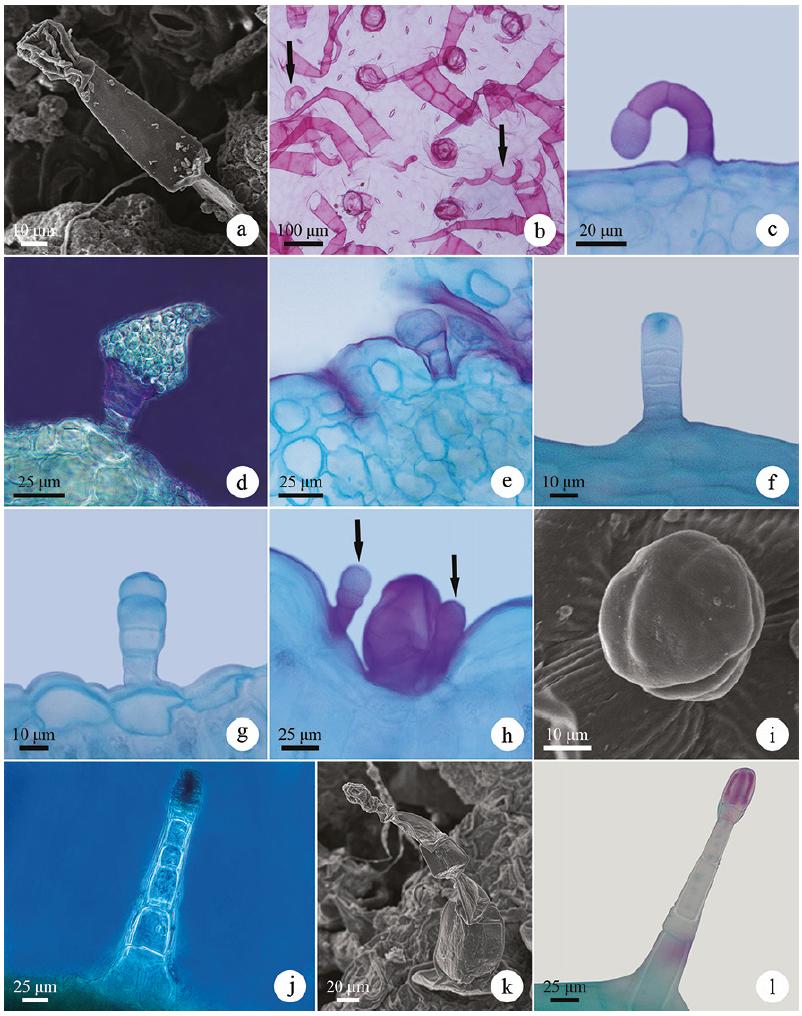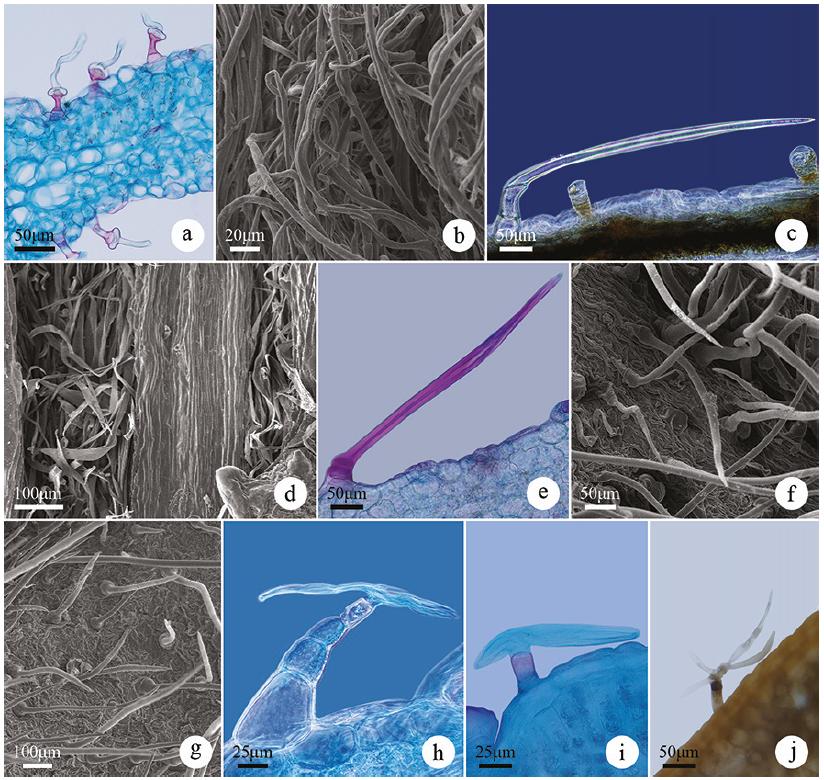ABSTRACT
Asteraceae is the largest family of angiosperms and occurs predominantly in grassland areas. This study aimed to identify and characterize the foliar trichomes of 34 Asteraceae species from Sand-fields of the Pampa biome, by means of epidermal analyzes (front and transverse view) under light and scanning electron microscopy. Eleven types of trichomes were identified and characterized: three glandular (recurved on the epidermis, erect-capitate and uniseriate to multiseriate vesicular-capitate) and eight non-glandular (simple conical, flagellate-filiform, aseptate-flagellate, whip-like, oblique-flagellate, branched with one arm, branched with two T-shaped arms, branched with three or more arms). The most representative glandular type was the uniseriate to multiseriate vesicular-capitate (58%) and the non-glandular type was the simple conical (35%). A large number of trichomes is an adaptive strategy to the adverse conditions of the Pampa biome and its morphological diversity can be useful in the family systematics.
Keywords:
anatomical adaptations; glandular trichomes; leaf anatomy; non-glandular trichomes; taxonomy




